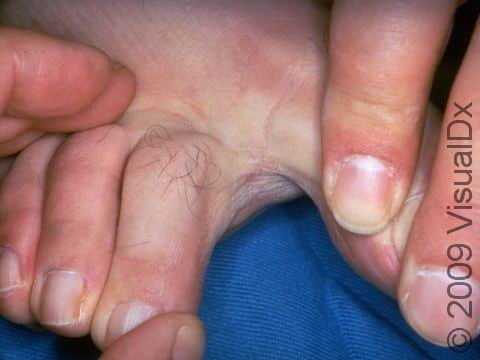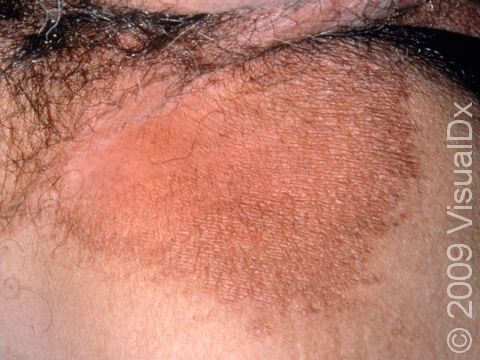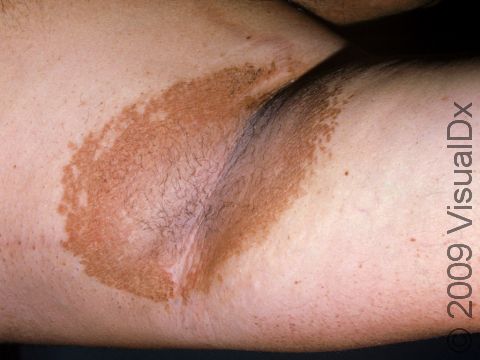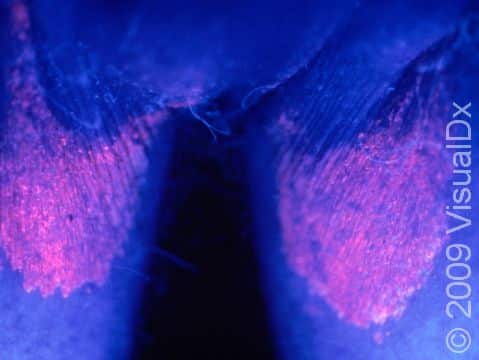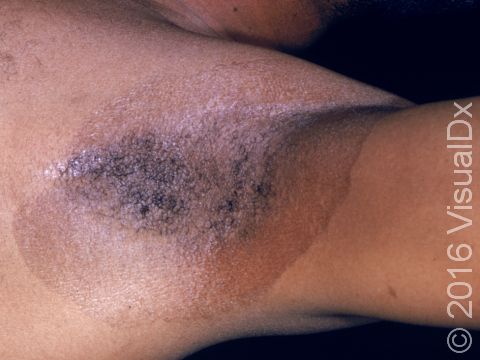Erythrasma
Erythrasma is a common chronic skin condition affecting the skin folds. The slowly enlarging patches of pink to brown dry skin are caused by an infection by the bacterium Corynebacterium minutissimum.
Who's At Risk?
Erythrasma can affect people of any age or ethnicity, but it is more common among individuals who live in warm, humid climates. It is also more common in dark-skinned people. Although both sexes are equally affected, men tend to have the groin infection more often than women.
The following conditions may predispose people to erythrasma:
- Diabetes
- Obesity
- Excessive sweating
- Poor hygiene
- Immune deficiency
Signs & Symptoms
Erythrasma looks like a patch of pink to red, scaly skin. The border of erythrasma is well-defined, meaning there is a sharp border between the affected patch and the surrounding normal skin. Over time, the pink or red color fades to tan or brown.
Erythrasma is typically located in moist body folds such as:
- Under the arms (axillae)
- In the groin and inner thighs
- Between the toes, especially between the 4th and 5th toes
Less commonly, erythrasma can be found in the buttock crevice or in the folds underneath the breasts. In certain individuals, especially in those with diabetes, the infection can become widespread and can involve the trunk, arms, and legs.
Erythrasma usually causes no symptoms, but some people report mild itching or burning, especially in the groin area.
Self-Care Guidelines
If you suspect that you have erythrasma, try:
- Gently scrubbing the involved area with antibacterial soap
- Keeping the involved area dry
- Applying over-the-counter creams containing tolnaftate or miconazole
Treatments
Once the diagnosis of erythrasma is established, the doctor may try one of the following treatments:
- Topical antibiotic lotions such as erythromycin or clindamycin
- Whitfield’s ointment (a mixture of benzoic acid and salicylic acid)
- Aluminum chloride solution to inhibit sweating and moisture
- Oral antibiotics such as erythromycin or clarithromycin
Visit Urgency
If the involved skin does not improve with self-care measures, then you should make an appointment to see a health care provider.
Trusted Links
References
Bolognia, Jean L., ed. Dermatology, pp.1110, 1128. New York: Mosby, 2003.
Freedberg, Irwin M., ed. Fitzpatrick’s Dermatology in General Medicine. 6th ed, pp.1102, 1848, 1876-1877. New York: McGraw-Hill, 2003.
Last modified on October 10th, 2022 at 7:28 pm

Not sure what to look for?
Try our new Rash and Skin Condition Finder
